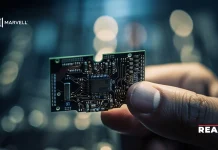Rail networks largely consist of electric trains ‘tethered’ to electric overhead and live rail systems. However, this is not feasible everywhere due to the high infrastructure cost/mile, remote geographic locations, and the practicality of building through tunnels and bridges. For these stretches of track, rail OEMs (AKA rolling stock manufacturers) and operators currently rely on diesel fuel – which is their number two cost. The use of diesel cannot continue forever in any market, and many are starting the transition toward zero-emission rail technologies. The new IDTechEx report “Battery Electric & Hydrogen Fuel Cell Trains 2023-2043” assesses the global opportunities emerging for battery-electric and hydrogen fuel cell (FC) trains as energy storage technologies advance rapidly.
Granular 20-year forecasts include train deliveries, battery demand (GWh), fuel cell demand (MW) and market value (US$ billion) across locomotive (BEL), multiple unit, and shunter trains. The cost evolution of railroad batteries, FCs and green hydrogen is also explored to assess long-term feasibility.
Indeed, the new IDTechEx report shows that demand for ‘untethered’ electric trains will increase rapidly over the coming years, with sales growing four-fold year-on-year to reach over 100 deliveries in 2023. The primary drivers are rail OEMs and operators seeking to reduce high diesel costs, as well as self-made climate targets set to align with broader goals such as the Paris Agreement and ‘Fit for 55’ in Europe.
Industry momentum is also building through the rapid advancement of Li-ion battery technology, with systems now capable of reaching the multi megawatt hour (MWh) level in confined carriage spaces. Systems up to ~14MWh are being installed today in the largest trains, known as battery electric locomotives, or BELs. In the future, the vast energy requirements of rail will eventually lead to some of the largest traction battery deployments across all electric vehicle markets – potentially beyond 20MWh per train.
Initial rail electrification will be led by multiple units (MU), which are trains used for passenger operations. Battery-electric MUs (BMUs) are being developed to replace the diesel MUs currently operating between regional and intercity lines. Initial deployments have focused on route lengths of up to around 100km, which requires battery systems comparable to commercial road vehicles.
SOURCE: PR Newswire




